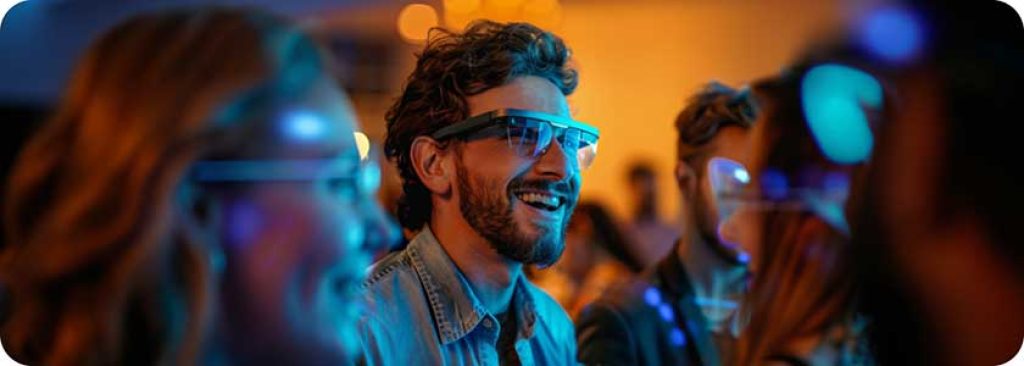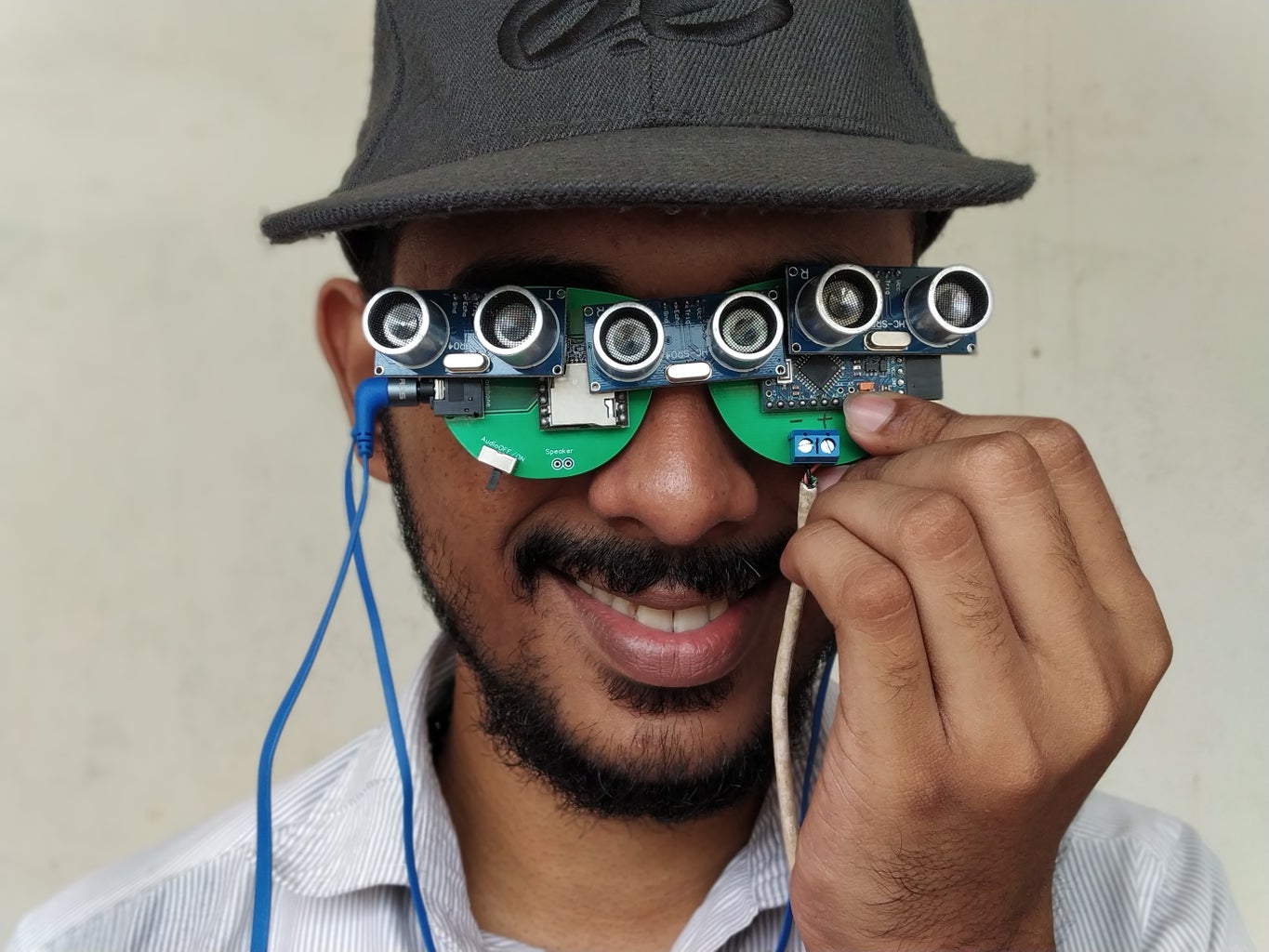Maximizing Efficiency with Screen Readers for the Blind: A Comprehensive Guide
Wiki Article
Empowering Independence With Assistive Innovation for the Blind
The assimilation of assistive technology for individuals that are blind or visually damaged represents a considerable improvement in fostering independence and enhancing high quality of life. With a variety of gadgets-- from screen viewers to cutting-edge tactile devices-- these technologies not only help with navigation and communication however also advertise social addition and involvement in numerous aspects of life. As we discover the diverse sorts of assistive tools and their real-world applications, it becomes clear that the influence is extensive. The development of this innovation increases important questions regarding availability and future growths that warrant more evaluation.Understanding Assistive Innovation
Although assistive modern technology has actually developed significantly over the years, its basic objective continues to be the very same: to improve the quality of life for people with specials needs, especially those who are blind or aesthetically impaired. This innovation encompasses a wide series of devices and gadgets that help with freedom and performance in daily activities.Assistive technology can be classified into sophisticated and low-tech options, each designed to fulfill particular demands. Modern devices commonly include software application applications, specialized equipment, and flexible devices that make use of advanced modern technology to provide assistance in various contexts. On the other hand, low-tech solutions may involve daily items that are modified to improve access, such as magnifiers or tactile pens.
The assimilation of assistive technology right into the lives of people who are blind or aesthetically hindered not only advertises freedom but likewise cultivates social inclusion and involvement in educational and professional environments. By leveraging these innovations, customers can navigate their environments, gain access to info, and communicate properly, thereby improving their total lifestyle. Understanding assistive technology is vital for specialists, caregivers, and advocates that intend to support people in optimizing their potential and attaining greater freedom.
Kinds Of Assistive Tools
Assistive devices for the blind and aesthetically impaired are vital tools that enhance daily living by addressing certain difficulties encountered by customers. These tools can be extensively categorized into three main kinds: optical devices, electronic devices, and sensory tools.
Sensory tools, such as Braille displays and responsive maps, provide different ways to obtain info. Braille displays convert digital text into Braille, making it possible for individuals to review touch. Tactile maps provide spatial understanding via raised lines and structures, allowing for much better ecological awareness.
Together, these assistive devices encourage individuals with aesthetic problems to engage more completely with their environments, advertising greater independence and confidence in daily activities.

Effect On Daily Life
The assimilation of assistive modern technology into the lives of individuals that are blind or aesthetically damaged substantially enhances their capability to interact and navigate with the globe around them. Instruments such as display viewers, Braille shows, and mobile applications promote accessibility to info, permitting individuals to involve with electronic web content, connect effectively, and take care of daily jobs independently.Moreover, technologies like clever glasses and navigating apps supply real-time aid in click for source strange settings, improving movement and self-confidence. These devices make it possible for individuals to recognize obstacles, checked out indications, and even recognize faces, therefore cultivating a feeling of autonomy in public spaces. Furthermore, home automation systems, which can be regulated through voice commands, enable individuals to manage their living atmospheres better, boosting convenience and safety.
The influence of assistive technology prolongs beyond functional tasks; it advertises social incorporation and psychological well-being. By bridging the gap in between individuals and their environments, these technologies encourage users to get involved completely in area tasks, pursue academic possibilities, and engage in purposeful partnerships. Ultimately, the development of assistive technology contributes in redefining the opportunities for individuals who are blind or visually impaired, causing a more inclusive and obtainable society.
Success Stories and Testimonials

An additional effective review comes from Mark, a recent college graduate optometrist specialist who used screen analysis software application throughout his scholastic journey. This innovation enabled him to gain access to program materials and get involved in discussions, eventually bring about his effective shift into the labor force. Mark credit histories assistive innovation for encouraging him to attain his career goals, emphasizing its duty in leveling the playing area for individuals with aesthetic problems.
Furthermore, recreation center have reported increased involvement in their programs many thanks to the intro of obtainable digital systems. These systems have actually made it much easier for individuals to connect, share sources, and assistance each other. These success tales jointly emphasize the extensive effect of assistive modern technology in fostering freedom, improving lifestyle, and damaging down barriers for the blind and visually damaged area.
Future Patterns in Assistive Technology
Arising technologies are positioned to reinvent the landscape of assistive tech for people that are visually impaired or blind. Innovations in synthetic knowledge (AI) and machine discovering are enhancing the capabilities of tools, enabling even more intuitive customer experiences. For instance, AI-driven applications are increasingly able to identify objects and review message out loud in real-time, supplying customers with valuable details concerning their environments.In addition, developments in wearable innovation are developing brand-new possibilities for freedom. Smart glasses geared up with enhanced reality functions can overlay critical info onto the individual's field of view, promoting navigation and communication with the setting. The assimilation of Internet of Things (IoT) gadgets is enhancing ease of access in wise homes, allowing individuals to manage home appliances and get notices via voice commands or responsive interfaces.
The advancement of braille screens and tactile feedback systems is also on the increase, advertising accessibility to electronic material and enhancing communication. As these modern technologies proceed to evolve, they promise to boost day-to-day living, instructional opportunities, and employment prospects for individuals with visual impairments. Continual partnership between engineers, individuals, and advocacy groups will certainly be essential in ensuring these technologies satisfy the requirements of the community effectively.
Verdict
In final thought, assistive modern technology plays a pivotal duty in improving the independence of people that are aesthetically impaired or blind. By supplying important tools and sources, these modern technologies assist in boosted interaction, navigation, and gain access to to details, thereby promoting autonomy and self-confidence. The transformative influence of assistive gadgets not only promotes effective communication with the setting however also encourages social incorporation and participation in different facets of life, ultimately encouraging individuals to thrive within their neighborhoods.The assimilation of assistive technology for individuals who are aesthetically damaged or blind represents a considerable development in cultivating self-reliance and improving high quality of life.The assimilation of assistive innovation right into the lives of people who are blind or visually impaired not just advertises freedom however likewise promotes social inclusion and participation in educational and professional environments. Eventually, the development of assistive technology is important in redefining the possibilities for individuals who are visually damaged or blind, leading to a more inclusive and obtainable society.
Lots of individuals that are blind or visually damaged have shared motivating success tales that highlight the transformative effect of assistive innovation on their lives.In final thought, assistive technology plays an essential function in enhancing the self-reliance of individuals who are blind or visually damaged.
Report this wiki page